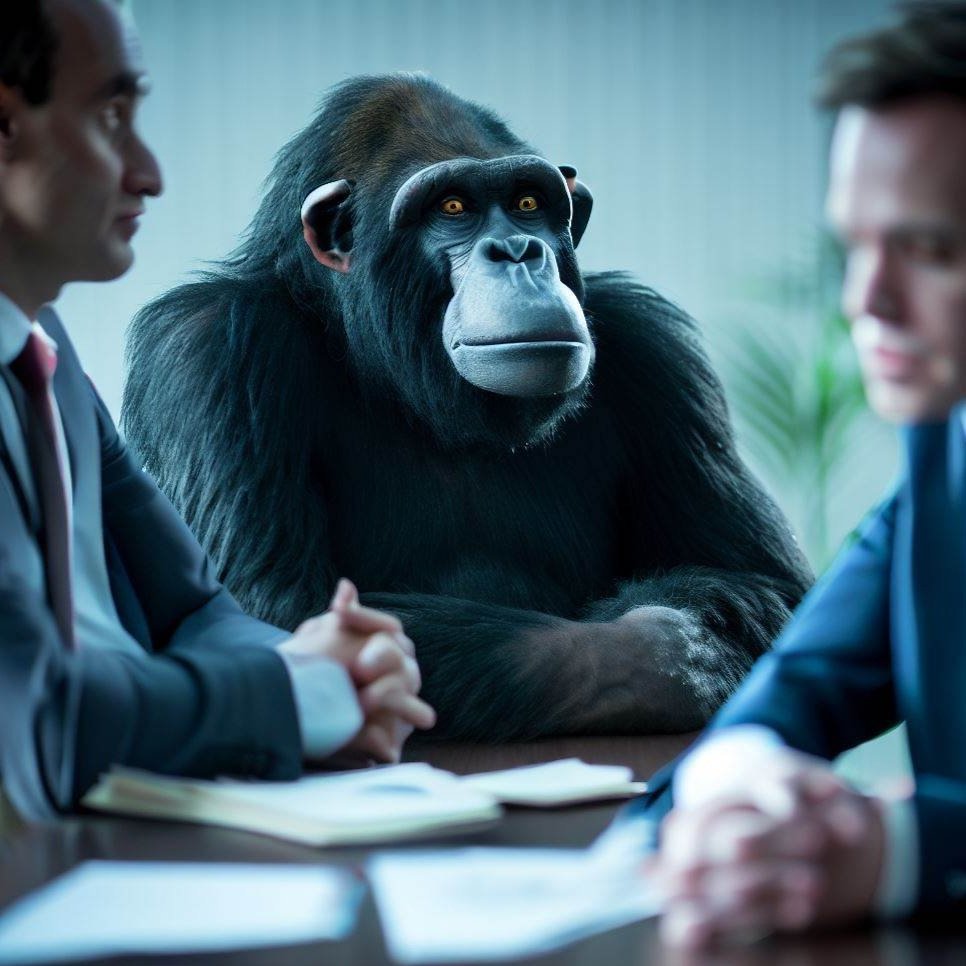Creating a different kind of space
“This is the kind of space that walks into a conversation like a 350 lb gorilla calmly walking into the meeting and sitting down…”
Photo by: Aaron Gudenkauf w/ Bing Image Creator
I recently had the opportunity to listen in on a business meeting for a local restaurant. The restaurant owner stood out to me. I was impressed by how she effortlessly made space for her team to engage and lean into change. Without revealing identifying details, the restaurant was essentially facing an existential crisis. Having recently started up, expenses were exceeding revenue - and while expected for initial startup, the rate of excess was unsustainable. So she, the owner, put the question to her team - how can we get the expenses under control?
There were no accusations. No blaming. Just a leader kindly laying out the problem before her team and asking for them to lean in and help solve the problem. There was a notable pause after her presentation of the problem. It stood out. Made its presence felt, and she politely waited until the team started to creep into the conversation. Initially with commentary providing additional perspective on expenses ("I noticed it as well," " It felt like something was off," etc.). In some instances, she added some additional details confirming or adjusting individual perspectives, but for the most part, the owner just listened until the team started to offer suggestions and entered a brainstorming phase of the discussion.
I'm not going to delve further into that conversation. For those of you who abhor loose ends in stories, I’ll close that chapter by saying the team developed a plan to cut expenses - including adjusting hours to better match peak foot traffic. Back to the topic at hand. I want to focus on the intentional, tangible space that she created. Last blog we talked about the Space Effect and your spatial awareness of what is going on around you. This is a different kind of space. This is the kind of space that walks into a conversation like a 350 lb gorilla calmly walking into the meeting and sitting down - everyone knows it’s there AND nobody makes eye contact initially.
Space needs trust. Your team must trust you (the leader) AND the other team members sufficiently to engage in this type of dialog. If the team doesn’t trust the leader - they don’t engage at all. If team members don’t trust each other, they can censor/adjust what they say - or not engage at all. It’s super easy to not engage at all. This is when leaders often start randomly picking on people and posing direct questions. It’s a perfectly fine strategy, just be aware of the signal that trust needs some work.
Space also needs to be bound. It can’t go on indefinitely, right? You can’t just start a meeting and sit there FOREVER. You also can’t implement a solution and then have a team member approach you months later with some critical piece of information that was never presented during prior discussions. Well… you can, it just tends to blow things up and you end up exasperatedly asking why the individual didn’t bring this up sooner.
As a leader, if you’ve got those two elements -trust and boundaries- then all that’s left is to intentionally create the space. It’s a simple formula:
Explain the problem (in a non-accusatory fashion)
Highlight that you need help in finding collaborative solutions
Reiterate that the problem needs to be addressed
Open the floor for team members to engage
Wait for the team to engage.
That last part is the really hard part, you have to be comfortable and willing to wait. This can be particularly difficult for people who don’t like silence in conversations. But that’s what you’re doing. You’re standing up, opening the door for the gorilla, and watching/waiting to see who says what. Once the conversation starts flowing, you just have to help navigate to brainstorming solutions - we’ll cover that in another blog. Until next time.

